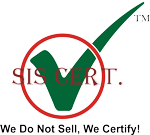
ISO 14001 certification : Environmental Management System (EMS)
ISO 14001 is a set of standards published by the International Organization for Standardization (ISO) and it enlists the requirements for implementing the Environmental Management System (EMS). It is helpful in establishing the requirements for environmental performance. This standard helps in developing, implementing, and improving an environmental management system. In addition to it, ISO 14001 Certification in Kuwait helps in the sustainable management of the organization’s relationship with the environment.
ISO 14001:2015 contains all the requirements for an environmental management system that helps the organization in enhancing its environmental performance. This standard was first published in 1996, and since then it has grown to become one of the most popular standards for environmental management. Hundreds of thousands of organizations all over the world have certified their environmental management system with ISO 14001:2015.
The second edition of ISO 14001 was published in 2004. Currently, the third edition of ISO 14001 is in force, which came into effect on 15th September 2015. The newest version includes the concepts of organizational context, leadership roles, and life cycle
of the system.
Benefits of ISO 14001 certification:
- Improve the efficiency of resources.
- Reduction of wastages.
- Cost reduction.
- Provides a guideline for measuring the environmental impact.
- It rewards your organization with a competitive edge in the market.
- It increases new business opportunities.
- It helps in meeting the legal obligations.
- It enhances customers and stakeholders’ trust.
- It reduces the overall impact on the environment.
- It helps in maintaining consistency in environmental management.
Requirement of ISO 14001 standard:
The structure of ISO 14001 is split into ten sections. The first three are introductory in nature, whereas the last seven contains the specifications about the environmental management system. Let us understand about the seven sections in detail.
Section 4: Context of the organization – This section deals with understanding the requirements of your organization for implementing a unique EMS in it. It involves the identification of internal and external issues, expectations of the external parties, as well as defining the scope of EMS, and recognizing the processes required for EMS.
Section 5: Leadership – This requirement puts the top management in an instrumental role in implementing the EMS. The top management is responsible for demonstrating commitment towards the environment by effectively implementing the EMS, defining the environmental policy and communicating it with the workforce, and assigning roles and responsibilities throughout the organization.
Section 6: Planning – The ongoing functions of the current EMS should be planned by the top management. Planning also includes risk assessment and identification of the objectives for the improvement of the organization. In addition to that, it is essential for
the organization to assess the interaction of organizational activities with the environment and its legal obligations.
Section 7: Support – This section deals with managing all the resources for the EMS of the organization. It also includes the requirements around awareness, competence, communication, and control of documented information (records and documents
required for your processes).
Section 8: Operation – The operation requirements deal with all the environmental controls required by the business processes. It also includes the identification of potential risks and planning the mitigation responses in the event of such emergencies.
Section 9: Performance evaluation – This is important for constant monitoring and measurement of the functioning of your EMS. It involves assessing the compliance of your environmental controls, performing internal audits, and performing management
review of the EMS.
Section 10: Improvement – This section covers how you can improve your EMS and upgrade it. It includes the identification of nonconformities in the processes and taking corrective actions to check them.
If you are looking for your organization’s ISO 14001 certification in Kuwait, you are at the right place. SIS Certifications is one of the most trustworthy certification bodies worldwide. Our vast pool of experienced auditors aims to offer their expertise in critically analyzing your process compliances, identifying your nonconformities, and certifying you at the end of successful completion.
ISO STANDARDS
Download Forms
COUNTRIES
55+
HAPPY CUSTOMERS
15K+
AUDITORS
500+
TECHNICAL EXPERTS
500+
Trusted by the world’s fastest growing companies:















To know more about SIS Certifications – Click Here
ISO 14001 is a recognized international standard that sets out requirements for an environmental management system. It helps organizations improve their environmental performance by using resources more efficiently and reducing waste, achieving competitive advantage and stakeholder confidence.
This makes it possible to monitor your environmental aspects, reduce impacts and ensure compliance with the law. It helps organizations improve their environmental performance by using resources more efficiently and reducing waste, achieving competitive advantage and stakeholder confidence.
The current ISO 14001 standard is ISO 14001:2015, which was released in September 2015.
Get a certification
Corporate Office (India)
Branch Office (Kuwait)
Jaber Al Mubarak Street, Block 04, Sharq District, Nouf Tower 16th Floor, Unit 06, Kuwait
Open Hours
Monday & Saturday: 8am — 6pm
Sunday: 11am — 4pm
